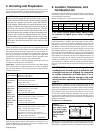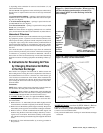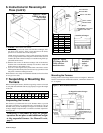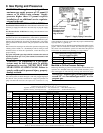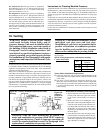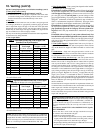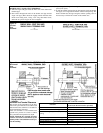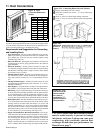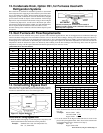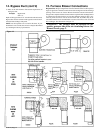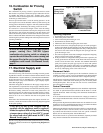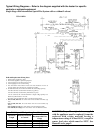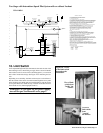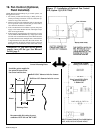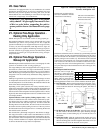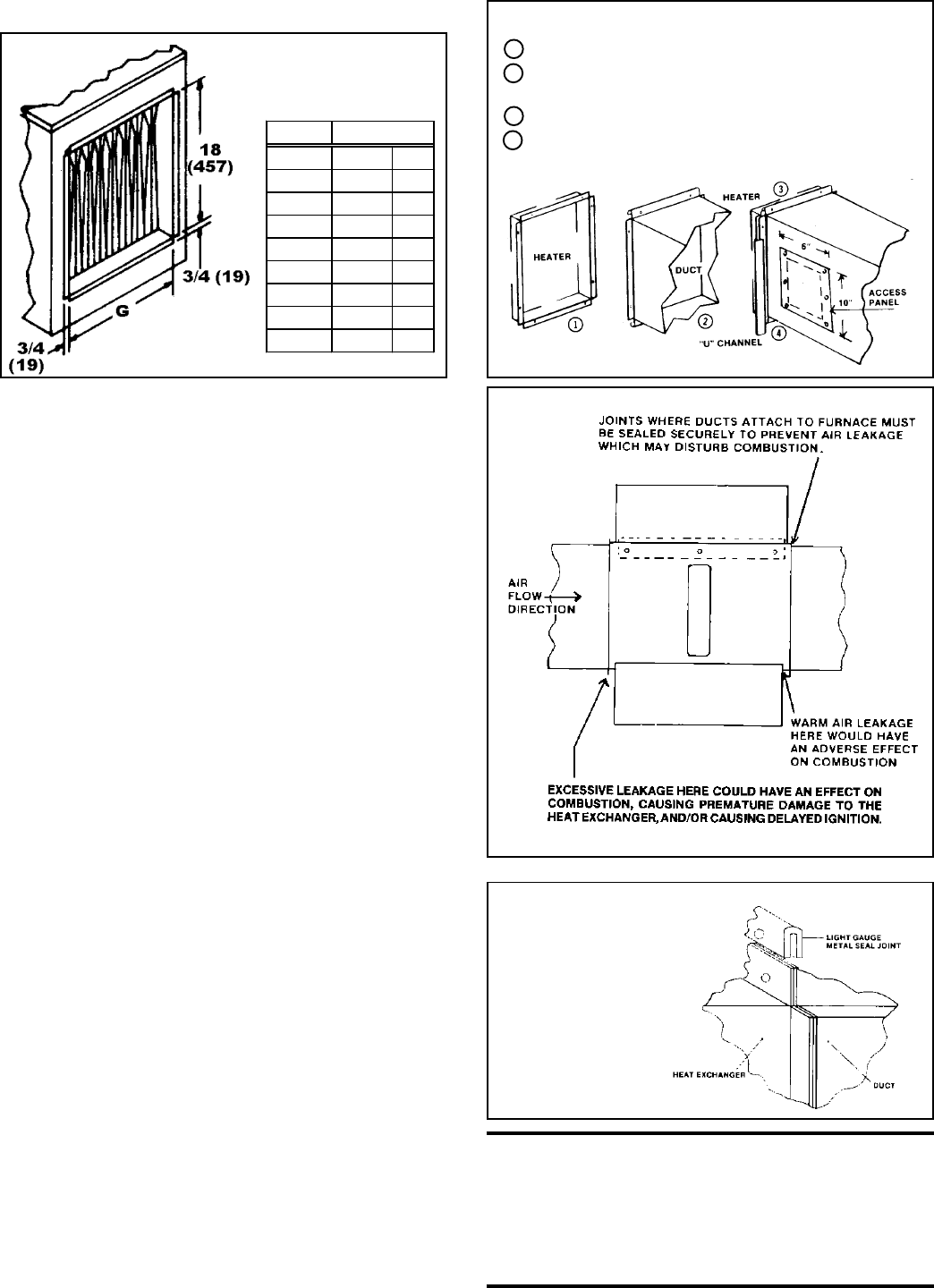
Form 421, Page 12
11. Duct Connections
NOTE: If the furnace is equipped with a unit-mounted ductstat (Op-
tion AG3), the sensing bulb must be removed from the mounting bracket
(save the retainer clip) before the ductwork can be attached. See in-
structions in Paragraph 22 for re-mounting the sensor.
Requirements and Suggestions for Connecting
and Installing Ducts
• Type of Ductwork - The type of duct installation to be used de-
pends in part on the type of construction of the roof (whether wood
joist, steelbar joist, steel truss, pre-cast concrete) and the ceiling
(whether hung, flush, etc.).
• Ductwork Material - Rectangular duct should be constructed of
not lighter than No. 26 U.S. gauge galvanized iron or No. 24 B & S
gauge aluminum.
• Ductwork Structure - All duct sections 24 inches or wider, and
over 48 inches in length, should be cross broken on top and bottom
and should have standing seams or angle-iron braces. Joints should
be S and drive strip, or locked.
• Through Masonry Walls - No warm air duct should come in con-
tact with masonry walls. Insulate around all air duct through ma-
sonry walls with not less than 1/2" (1" is recommended) of insula-
tion.
• Through Unheated Space - Insulate all exposed warm air ducts
passing through an unheated space with at least 1/2" (1" is recom-
mended) of insulation.
• Duct Supports - Suspend all ducts securely from adjacent build-
ings members. Do not support ducts from unit duct connections.
• Duct Sizing - Proper sizing of the supply air ductwork is necessary
to ensure a satisfactory heating installation. The recognized author-
ity for such information is the Air Conditioning Contractors Asso-
ciation, 1228 17th Street N.W., Washington, D.C. 20036. A manual
covering duct sizing in detail may be purchased directly from them.
• Removable Panels - The ducts should have removable access pan-
els on both upstream and downstream sides of the furnace. These
openings must be accessible when the furnace is in service and
should be a minimum of 6" x 10" in size so smoke or reflected light
may be observed inside the casing to indicate the presence of leaks
in the heat exchanger. The covers for the openings must be attached
in such a manner as to prevent leakage. See Figure 12A.
• Supply Air Duct/Furnace Horizontal Connection - The seal be-
tween the furnace and the duct must be mechanical. Duct connec-
tion should be made with "U" type flanges on the top and bottom of
the connecting duct. Slide the duct over the flanges of the heater
giving an airtight fit. Provide "U" type channels for the other side
flanges to ensure tight joints. Use sheetmetal screws to fasten ducts
and "U" channels to the furnace flange. See Figures 12B and 12C.
Figure 12A - Connecting Ductwork to the Furnace
1 Flanges on the heater turn out as shown.
2 Shape duct connection as shown -- "U" on top and bottom;
"L" on sides.
3 Slide "U" form over heater flange making connection.
4 Form "U" strips to seal ends. Drill and lock with sheetmetal
screws.
CAUTION: Joints where ducts attach to furnace
must be sealed securely to prevent air leakage
into burner rack area. Leakage can cause poor
combustion, pilot problems, shorten heat
exchanger life and cause poor performance. See
Hazard levels, page 2.
Figure 12B -
Attachment
of Duct to
Furnace
Figure 12C -The
seals between the
furnace and the
duct must be
mechanical. "U"
channel method is
illustrated here.
Size
75, 100
12-1/2" 318
125, 140
15-1/4" 387
170
18" 457
200
20-3/4" 527
225
23-1/2" 597
250
26-1/4" 641
300
31-3/4" 806
350
37-1/4" 946
400
42-3/4" 1086
G
Figure 11 - Duct
Connection Dimensions
(inches)



